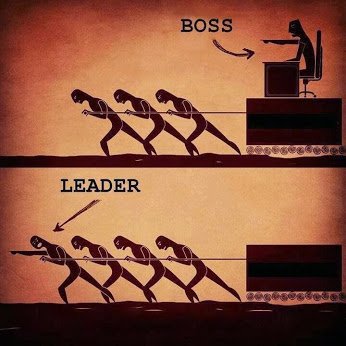GPT-4o: Your Secret Weapon for Learning, Creating and Mastering New Skills
Carmen Hughes
Vibrant digital illustration showcasing AI applications with a central friendly robot symbolizing GPT-4o.
Have you ever wished you could have a personal tutor for your child, a master chef, or a handyman at your fingertips 24/7? Well, good news, you can have all of these and more. And that’s because of the magical capabilities of GPT-4o.
In our last blog post, we explored seven mind-blowing ways to unleash the magic of GPT-4o. But guess what? There's even more magic that it can do. So buckle up, and let's explore more ways GPT-4o can rock your world.
1. Turbocharge Your Child's Potential with the Ultimate Pocket Tutor
This application of GPT-4o is fascinating for students and parents alike. Imagine your children can get personalized tutoring in subjects like math, science, history, or English tailored to their learning pace and style. Moreover, a student can instruct the AI model to make the tutoring fun, engaging or even quirky. A personal tutor can also double as a virtual homework buddy. This feature alone will transform the homework routine into more engaging learning.
Imagine a typical student sitting down to tackle their homework. It's 10 pm on a Sunday, and young Maddy stares at a blank Word document, trying to figure out how to write a 1,200-word essay on the Pythagorean Theorem. After all, what topic could be more exciting than the Pythagorean Theorem? Anxiety and writer’s block are setting in, but then Maddy remembers hearing about GPT-4o. With a few easy prompts, GPT-4o breaks down the complex Greek concept for Maddy, suggests a few engaging real-world examples, and even provides a clever opening line for her essay. Suddenly, the essay seems manageable. Maddy smiles, her fingers flying across the keyboard as ideas pour out. GPT-4o saved the day, and now she can get some needed sleep.
A personal tutor is one of the best ways for students to understand any subject better. GPT-4o as a personal tutor levels the playing field. Families with limited resources generally can't afford a professional tutor. GPT-4o makes it within reach of most students, who can access a virtual tutor right from their pocket.
With GPT-4o, learning becomes an adventure. Students can explore subjects in ways that spark their curiosity and make even the most complex or tedious topics feel approachable. Now, students can turn homework into an engaging, personalized experience. Parents will be thrilled that their kids have immersed themselves in learning and are earning better grades.
2. Artists Go from 0 to 60 with GPT-4o
With the widespread adoption of AI, many people have predicted a doomsday outcome for several industries and professions. Creative artists typically top the list of the most vulnerable. Novel AI image tools like OpenAI's DALL·E, Midjourney, and Google's Gemini AI generate vivid, lifelike, highly imaginative, custom images for businesses and people. Arguably, the availability of these free or affordable tools has indeed collapsed the revenues of online stock image sites like Getty Images and Adobe Stock.
Artists, however, can couple their unique, innate talents with GPT-4o to turbocharge their ideas and work. Thanks to GPT-4o, artists can explore new artistic techniques and styles with an efficiency never seen before. Using a few descriptive prompts, they can examine concepts for charcoal drawings, paintings, sculptures, digital art, and many more modalities. GPT-4o can generate a range of tailored concepts in seconds, helping artists break through any creative blocks – just like the writer’s block many of us less artistically gifted people suffer with.
Let's examine a hypothetical example. Fashion Runway is a long-running, streaming series where one dozen fashion design artists compete to win. Each week, the show's judges unveil a new assignment. The design brief requires that each artist conceptualize and sketch one or two outfits. Artists must find the perfect materials (color, texture and weight) to create their designs. From there, they have to drape, cut the fabric, stitch pieces together, fit them on a model, refit it and finish tailoring by hand and machine. After every assignment, judges send someone home. The contest continues until three competitors remain, who then compete in a grand finale to win the prize.
Consider what GPT-4o could do to help these particular artists (assuming the usage of an AI tool was even allowed). The fashion designer could share some of their previous designs with GPT-4o, discuss their overall style and design aesthetics, share their favorite fashion designers with whom they align closely, and discuss the assigned brief and vision for it as well as deadlines. GPT-4o can steer the artist in the right direction and away from problematic materials, which could delay completion or result in an unattractive garment. GPT-4o could also recommend accessories to create or use, as well as hair and makeup to complete the look. Stepping away from this designer contest and into real life, any fashion designer can now collaborate with GPT-4o. In this human and AI tool collaboration, a creative artist can accelerate their ideas from concept to completion and collapse the time and costs from start to finish. If the fashion designer were creating a collection, they could save on time and materials and meet challenging deadlines.
Any artist, no matter the medium, can collaborate with GPT-4o, prompting it for custom tutorials and lessons on various artistic techniques, designs, workarounds, advice, etc. GPT-4o can provide step-by-step guidance tailored to an artist’s skill level, dependencies, goals, etc. But it doesn't stop there. With GPT-4o's visual and audio capabilities, artists can receive feedback and recommendations for improvement. This interactive feedback loop can help artists plan and execute a single project, cohesive collection, or series of works.
3. Conquer Your DIY Disasters: GPT-4o to the Rescue
Do any of your past DIY projects haunt you? For example, you told your wife not to worry because installing that new Japanese toilet would be a cinch—until it wasn't. Days later, the bathroom was a mess, the toilet was unusable – and there was a new leak.
How about when you decided to install a new bathroom vanity, which you knew, before even starting the project, that ripping out the old vanity would likely damage the walls? This project would require some new sheetrock – something you’d never done before. That YouTube video you watched several times made it look so easy. Yet after hours of trial and error with mudding the walls and re-mudding them, you stood back to admire your work—only to find that, well, it looked like crap. Ah, the unbridled satisfaction of yet another "honey-do" project.
In hindsight, these DIY disasters might be funny, but no one was laughing at the time – especially "honey." Enter GPT-4o, your new trusty friend and foreman for DIY projects! With GPT-4o, you can get step-by-step instructions, a list of materials for the project, time frames for each step, and real-time troubleshooting advice. Even better, your next remodeling project doesn't end up in the DIY hall of shame (and you don’t end up in the dog house).
4. Bon Appetit! Recreate Instagram-Worthy Dishes with GPT-4o
Everyone's Instagram feed has mouth-watering appetizers, main dishes, desserts and colorful cocktails. IG users and followers inevitably want the recipe to make it at home. Now, with GPT-4o, aspiring chefs, bakers, cooks and even those challenged in the kitchen (you know who you are) can take their culinary skills to the next level.
Snag a picture in your Instagram feed of someone's delicious tiramisu, roasted cauliflower potato soup, mushroom mac n’ cheese, or gnocchi with sage brown butter. Or use your picture from an unforgettable dish at a restaurant. Upload a photo or video of the dish and ask GPT-4o to create the recipe. Describe in your prompt a few known ingredients or apparent flavors or provide the name of the dish or item (i.e., European chocolate poppy seed cake). While not required, providing more details in your prompt will help GPT-4o create a step-by-step recipe, including ingredient lists, cooking instructions, and tips for perfecting the dish. GPT-4o can also give you variations and substitutions to accommodate any dietary preferences or restrictions, making it a versatile tool for any kitchen. Go ahead and customize a recipe by telling GPT-4o that you prefer less oil or sugar, for instance, and it will adjust the recipe to your liking. How cool is that? GTP-4o can be your sous chef, helping you plan an entire menu, dinner party or brunch based on a theme or cuisine. Step aside, Ina Garten!
The sky's the limit for how GPT-4o can make your life simpler, better and more efficient. GPT-4o is more than just an AI tool; it's a game-changer for learning, creating, and tackling life's challenges (even if it’s installing a new toilet). Whether you're a student, artist, DIY enthusiast, or aspiring chef, GPT-4o can improve your life and work. So why wait? Embrace the magic of GPT-4o today and unlock a world of possibilities. Your trusty AI companion is just a prompt away!









